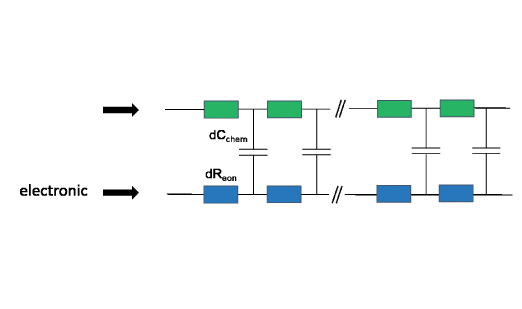The chemical capacitance as a fingerprint of defect chemistry in mixed conducting oxides
DOI:
https://doi.org/10.17344/acsi.2016.2302Keywords:
defect chemistry, impedance spectroscopy, mixed conductors, chemical capacitanceAbstract
The oxygen stoichiometry of mixed conducting oxides depends on the oxygen chemical potential and thus on the oxygen partial pressure in the gas phase. Also voltages may change the local oxygen stoichiometry and the amount to which such changes take place is quantified by the chemical capacitance of the sample. Impedance spectroscopy can be used to probe this chemical capacitance. Impedance measurements on different oxides ((La,Sr)FeO3-d = LSF, Sr(Ti,Fe)O3-d = STF, and Pb(Zr,Ti)O3 = PZT) are presented, and demonstrate how the chemical capacitance may affect impedance spectra in different types of electrochemical cells. A quantitative analysis of the spectra is based on generalized equivalent circuits developed for mixed conducting oxides by J. Jamnik and J. Maier. It is discussed how defect chemical information can be deduced from the chemical capacitance.

Downloads
Additional Files
Published
Issue
Section
License
Except where otherwise noted, articles in this journal are published under the Creative Commons Attribution 4.0 International License
